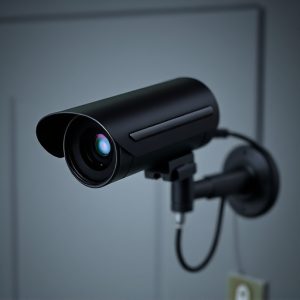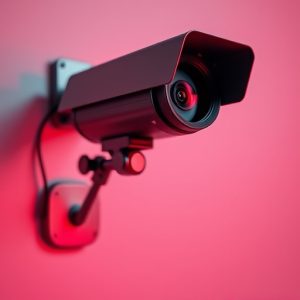Spy Camera and Microphone Operations: A Guide to Stealth, Technology, and Ethics
Spy cameras and microphones serve as critical tools in covert surveillance, offering high-quality, …….
Spy cameras and microphones serve as critical tools in covert surveillance, offering high-quality, discreet audio and visual recording capabilities. These devices are meticulously designed to mimic ordinary household objects like clocks or smoke detectors, ensuring they remain undetected during operation. They feature advanced imaging sensors such as CMOS or CCD for clear footage even in low light conditions, and noise reduction algorithms for crisp audio capture. Microdevices showcase cutting-edge acoustic engineering with directional microphones and digital signal processing for enhanced clarity and intelligibility. The integration of wireless communication allows for real-time data transmission with effective encryption, making these tools indispensable across various applications, including security and intelligence operations. However, their deployment comes with stringent legal and ethical considerations to protect privacy and uphold civil liberties. Users must comply with complex privacy laws and navigate the ethical implications of surveillance, ensuring that its use is justified, transparent, and does not infringe on individuals' rights. The miniaturization and advanced features of these devices underscore their significance in a tech-centric world, where they provide essential tools for maintaining security and order while respecting personal privacy.
delve into the clandestine world of surveillance with our exploration of spy listening devices. These ingenious tools, encompassing both spy cameras and microphones, are integral to covert operations. Our comprehensive guide illuminates their stealthy functionalities, while examining the technical intricacies that drive these miniature marvels. Learn to harness them with discretion, and navigate the complex legal landscape and ethical considerations inherent in their use. Join us as we unravel the mysteries behind spy cameras and microdevices, ensuring you are well-informed on their capabilities and implications.
Unveiling the Stealthy Functionality of Spy Camera and Microphones: A Comprehensive Guide
Spy cameras and microphones are pivotal tools in the covert surveillance domain, offering unparalleled stealth and functionality for capturing audio and visual data. These devices, designed with precision engineering, blend seamlessly into everyday environments, often going undetected by the untrained eye. A spy camera can be as discreet as a wall clock, a smoke detector, or even a seemingly innocuous household item. The integration of advanced imaging sensors and microprocessors enables these cameras to record high-quality videos and audio, which can be transmitted remotely for real-time monitoring or stored for later analysis.
The miniaturization and sophistication of spy camera and microphone technology have made them indispensable in various applications, from security surveillance to covert intelligence operations. These devices are equipped with features such as motion detection, night vision capabilities, and wireless communication, which enhance their effectiveness. Users can access live feeds or recordings through secure platforms, ensuring that the captured information remains confidential and accessible only to authorized personnel. The guide aims to demystify the workings of these gadgets, outlining their operational principles, potential use cases, and the measures taken to safeguard privacy and data integrity. Understanding the nuances of spy camera and microphone technology is crucial for anyone looking to utilize or counteract such devices in today’s tech-driven world.
The Technical Intricacies Behind Spy Cameras and Microdevices: How They Work
Spy cameras and microdevices are sophisticated tools employed in espionage and surveillance activities, often for covert operations or personal security purposes. These devices are engineered with a keen focus on compactness to maintain a low profile while capturing high-quality audio and visual data. The technical intricacies behind spy cameras involve advanced miniaturization techniques that allow for the integration of high-resolution imaging sensors into small form factors without compromising image clarity or resolution. These devices utilize CMOS or CCD sensors, which are capable of delivering crisp, detailed footage even in low-light conditions through enhanced light sensitivity and noise reduction algorithms.
Spy microdevices, on the other hand, are marvels of acoustic engineering. They are designed to pick up and amplify sound with pinpoint accuracy, often featuring directional microphones that can isolate specific sounds or voices from background noise. The recording quality is enhanced by using digital signal processing, which filters and compresses audio data to ensure clarity and intelligibility. These microdevices can be concealed within everyday objects, such as clocks, smoke detectors, or even button-sized units that can be ingested for covert human tracking. The integration of both spy cameras and microdevices with wireless communication technology enables real-time data transmission to a secure receiver, allowing for immediate analysis and action. This seamless blend of tiny size, advanced technology, and effective encryption makes them indispensable in the realm of intelligence gathering and security surveillance.
Mastering Discretion: Identifying and Using Spy Cameras and Microphones Effectively
When covert operations are necessary, mastering discretion is paramount. Spy cameras and microphones are indispensable tools in this realm, enabling users to gather information undetected. These devices have become increasingly sophisticated, capable of blending seamlessly into everyday environments. A spy camera might be cleverly disguised as an innocuous object like a clock, a smoke detector, or even a security camera, all while capturing high-quality video footage. Similarly, microphones come in various forms, from those designed to look like pens or watches to tiny devices hidden within plants or books. The key to their effectiveness lies in their ability to remain unnoticed while delivering clear and reliable audio recordings.
The deployment of these devices requires a deep understanding of their capabilities and limitations. Users must consider the acoustic environment, potential line-of-sight challenges, battery life, and data storage capacities. Additionally, the legal implications of surveillance should not be overlooked; it is crucial to operate within the bounds of privacy laws and ethical standards. Advanced spy cameras and microphones often come equipped with features such as motion or sound activation, night vision capabilities, and wireless transmission options, which can facilitate real-time monitoring or remote access. Mastering the use of these devices involves not just their technical operation but also an understanding of the context in which they are employed to ensure the information collected is accurate and actionable.
Legal Considerations and Ethical Implications of Utilizing Spy Camera and Microphone Devices
The deployment of spy camera and microphone devices raises significant legal considerations and ethical implications that must be carefully navigated. Legally, the use of such devices is governed by a patchwork of federal, state, and local laws. These laws dictate where and how these devices can be legally placed and operated. For instance, privacy laws vary by jurisdiction but generally prohibit the placement of recording devices in areas where individuals have a reasonable expectation of privacy. This includes both physical spaces, like private homes or locker rooms, and electronic communications, which are protected under wiretapping statutes. Users must adhere to these regulations to avoid legal repercussions, including criminal charges for invasion of privacy or unauthorized recording.
Ethically, the use of spy camera and microphone devices necessitates a profound respect for individual privacy and autonomy. Employers, law enforcement, and individuals must weigh the potential benefits of surveillance against the rights of those being monitored. The ethical dilemma intensifies with advancements in technology that enable more covert and comprehensive surveillance capabilities. It is imperative to consider the purpose of the surveillance and the extent to which it infringes upon personal freedoms. Ethical use of spy devices should be limited to scenarios where there is a compelling need, such as for public safety or to prevent harm, and must always be balanced with respect for individual privacy and dignity. Transparency about the presence and purpose of these devices is essential to maintain trust and ensure that their use does not become an invasive practice that erodes civil liberties.


